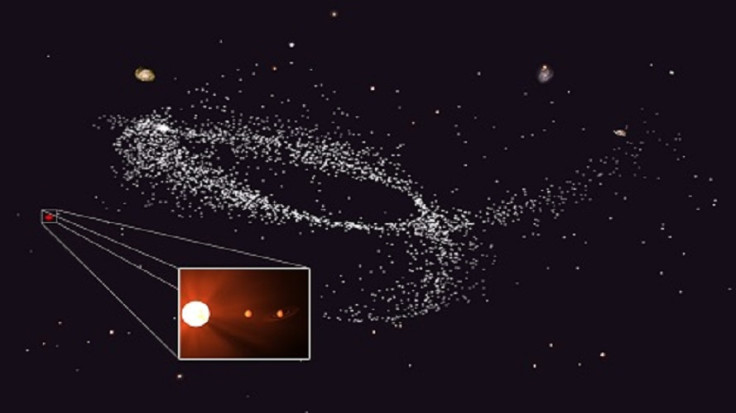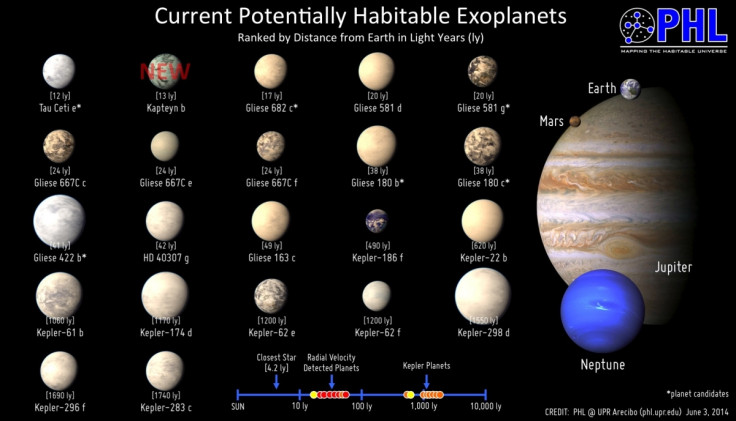Planet 'Ripe for Life' Kapetyn b Discovered Orbiting Ancient Star 13 Light Years Away

A planet has been discovered with the potential to host life as it is the right distance from their star to have liquid water on the surface – a key ingredient to support life.
Astronomers discovered two planets orbiting Kapteyn's Star, an ancient star in the southern constellation of Pictor 13 light years away from Earth.
The first star, Kapetyn b, is about five times as big as Earth and orbits its star once every 48 days, meaning it is warm enough to have liquid water on the surface. The second, Kapetyn c, is a super-Earth and orbits the star every 121 days – astronomers believe it would be too cold to have liquid water.
Kapteyn's star is the second fastest moving star in the sky and sits in the galactic halo, a cloud of stars that orbit the Milky Way. It is a red dwarf and was first discovered by Dutch astronomer Jacobus Kapteyn in the 19th century.

Led by astronomers at the Queen Mary University in London, the researchers used data from the Harps spectrometer at the European Southern Observatory to measure tiny changes in the motion of the star.
Published in Monthly Notices of the Royal Astronomical Society Letters, they then worked out some of the properties of the two planets using the shift in the star's light spectrum depending on its velocity.
Guillem Anglada-Escude, lead author of the study, said: "We were surprised to find planets orbiting Kapteyn's star. Previous data showed some moderate excess of variability, so we were looking for very short period planets when the new signals showed up loud and clear."

Kapteyn's star was born in a dwarf galaxy that was absorbed and disrupted by the Milky Way. This put the star into a fast halo orbit. Astronomers believe the two planets are probably around 11.5 billion years old – just two billion years younger than the universe.
"It does make you wonder what kind of life could have evolved on those planets over such a long time," Anglada-Escude said.
Scientists will now try to measure the atmospheres of the two planets to work out if they have liquid water.
"Finding a stable planetary system with a potentially habitable planet orbiting one of the very nearest stars in the sky is mind blowing. This is one more piece of evidence that nearly all stars have planets, and that potentially habitable planets in our Galaxy are as common as grains of sand on a beach," said Pamela Arriagada, second author of the study.
© Copyright IBTimes 2025. All rights reserved.






















